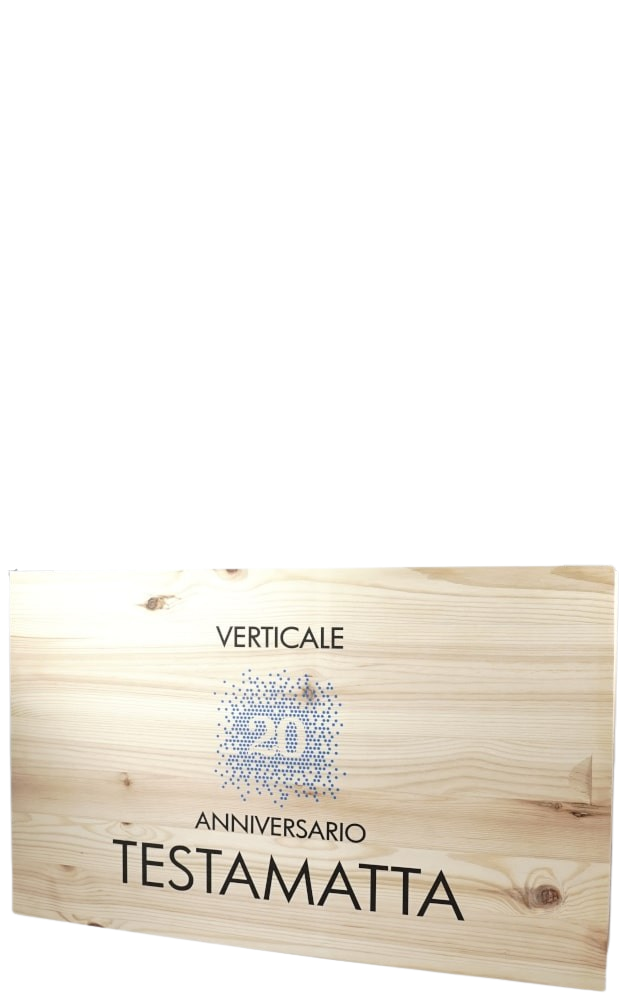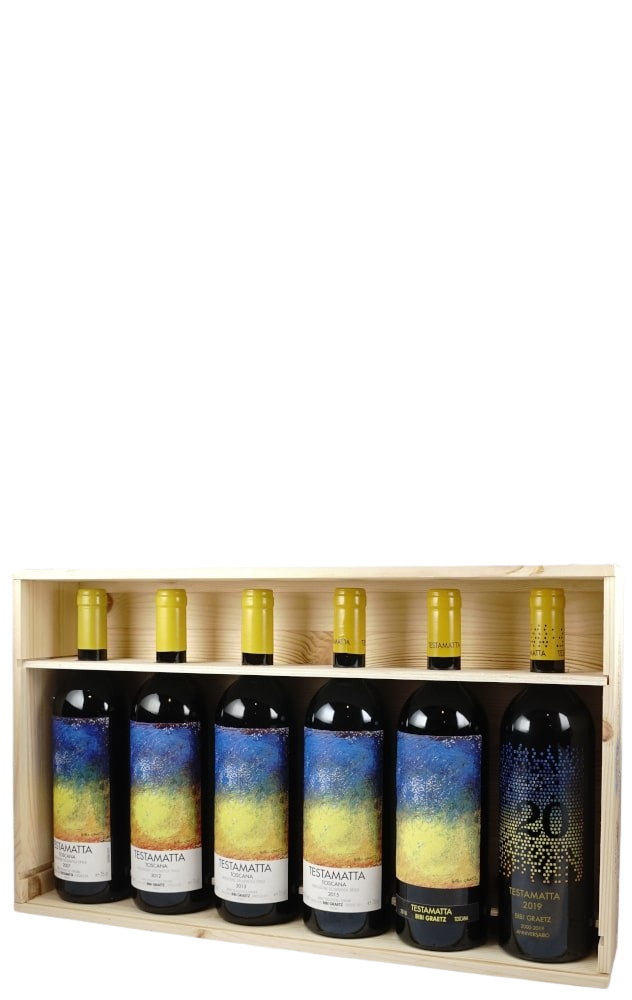2007 TestamattaGraetz’s 2007 Testamatta is soft and seamless as it flows onto the palate, revealing a silky, luxurious expression of fruit. The tannins are remarkably soft and well balanced, which makes the 2007 one of the most accessible young Testamattas I can recall tasting. Floral tones on the finish add a touch of brightness and lift on the close. While the 2007 isn’t overly complex or powerful, it does offer superb balance and delivers plenty of pleasure, even at this early stage. This is first-class juice. Anticipated maturity: 2010-2022.
- 93 Punkte Antonio Galloni (08/2009)
2013 Testamatta
Bibi Graetz applies his unique winemaking philosophy to a can-do-no-wrong vintage. The 2013 Testamatta (100% Sangiovese) opens to a deep and dark ruby color and smoky aromas of cigar ash, crushed stone, licorice, grilled herb and dried cassis. Make no mistake: This is one of the most original and off-the-radar expressions of Sangiovese you will ever taste. There is managed rusticity here that matches the imperfection and the undeniable beauty of the artwork that graces its label. Those bright blue and yellow brush strokes offer major contrast, yet together they reach harmony. That seems to be the overriding message of this wine that is otherwise loaded with personality and charm.
- 93+ Punkte Monica Larner (01/2017)
2018 Testamatta
The 2018 Testamatta shows elegant Sangiovese purity and transparency, starting with delicate wild berry and blueberry tones and finishing long with pretty accents of crushed limestone and a touch of campfire ash. In the glass, the wine is radiant and vivid with a luminous ruby or garnet color. Oak use is reduced to a bare minimum, with barrels that are up to their 16th year of use. "The older they are, the better," Bibi explains. As the wine opens in the glass, it presents pretty lilac and violet. This wine represents a blend of fruit from various sites (all with old vines that are farmed organically) across the region of Tuscany. The northern-most sites close to Florence tend to add the floral notes that are so characteristic of this cool vintage (which saw a bit more rain than average and extra work in the vineyards to kept these vines healthy). I visited the vineyards with Bibi in 2018 and remember how beautiful the grapes appeared on the vines. Much of the fruit used here comes from the Vigna del Cancello in Casciano del Murlo, which is midway between Siena and Montalcino. These southern sites give the wine its backbone and tannins. Bibi Graetz tells me that he struggled to create the blend for this 60,000-bottle release. He decided on a final blend, only to change his mind and re-blend two and a half months later. His second stab was specifically aimed at capturing finesse and softening the wine's tannic imprint. Indeed, the wine ultimately offers more in length (with fresh fruit flavors and bright acidity) than it does in power or mid-palate. The finish is silky, long and very fine.
- 94 Punkte Monica Larner (08/2020)
2019 Testamatta
A pure expression of Sangiovese, the Bibi Graetz 2019 Testamatta is a wine in constant evolution. Bibi has added 17 more hectares of vineyard to the program, with 12 hectares in Fiesole (north of Florence) and 5 hectares in San Donato in Colle (south of Florence) with 70-year-old vines. The base of the wine sees fruit from old vines planted in the 1950s in the cool-climate Lamole subzone of Chianti Classico. These new terroirs bring a lot more aromatic nuance and complexity to the wine with perfumed blue flower, candied orange peel, wet earth and plumy black fruit. White Alberese soils add a strong chalky mineral signature to the finish of this elegantly streamlined and linear Tuscan red.
- 94 Punkte Monica Larner (08/2021)












